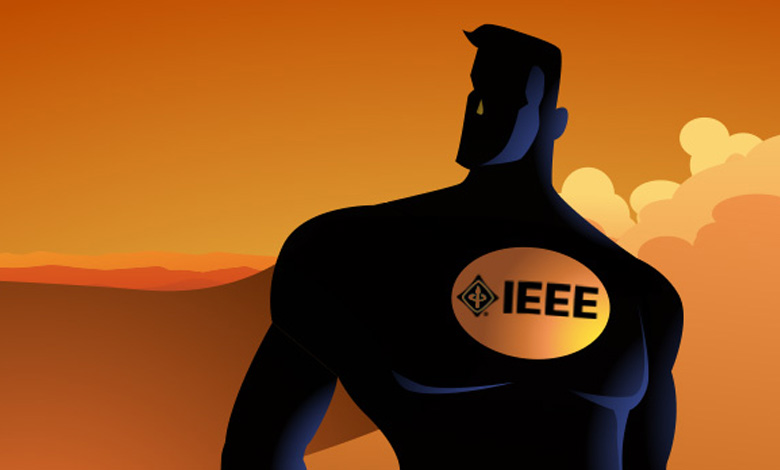Call it geek chic: Engineers, scientists, programmers and other technologists played lead roles in some of 2014’s most popular TV shows and movies. Whether it’s the silliness of “The Big Bang Theory,” the heroism of “The Flash” or the gravitas of “Interstellar,” pop culture has increasingly turned to science for some of its most interesting characters. It’s a trend that arguably started when “CSI” hit the air 14 years ago, and experts say it just may represent a change in real life as well.
“As opposed to prior decades, it’s cool to be a nerd,” says Marshall Barnes, R&D engineer and the author of “Paradox Lost: The Geometries of Time Travel.” He cites pop culture for a big part of this shift along with the fact that people in technology today are more vocal about what they do. This, he says, has translated to more youngsters taking up the technology mantle. “I’ve seen an increased interest among young people in careers involving science and technology,” he reports.
Although some people do seem to enter technology fields because of pop culture, the greater effect of these entertainments may be on the public at large. “The simple fact that more people are becoming aware of what engineers actually do is helping,” says Nehemiah J. Mabry, president of STEMedia Incorporated. “Engineers were always well-respected in society,” he says, adding that “the presence in pop culture is allowing more people to connect what we do to real-world applications.” He says this creates a general sense of respect for profession and an understanding that technologists are “in a pivotal position to literally contribute to solving our greatest challenges.”
The effect of these films can be particularly important for young women, says Nada Marie Anid, dean of the School of Engineering and Computer Sciences at New York Institute of Technology. “Girls watching these movies can think, ‘I can be her one day!'” She says roles such as Sandra Bullock in “Gravity” and Ann Hathaway and Jessica Chastain in “Interstellar” can serve as actual role models more than the superficial girlfriends and roommates on many other shows. “It will take a while to change established stereotypes about a male-dominated field like engineering,” she says, “but what we’re seeing in pop culture is a step in the right direction.” Similarly, professional career coach Sarah Weinberger says the roles of female engineers and hackers on shows such as “Veronica Mars,” “Smallville,” and, more recently, “Arrow,” have helped to improve the public perception of female programmers.
From Pop to Culture
Entertainment has not shifted the culture by itself. The rise of maker culture and the DIY movement have also raised public awareness of technology and the people who create it. As a result, “engineering and high technology are viewed as the place where you can solve problems, invent new things that make a difference and change the world for the better,” says Dianne Kibbey, global head of community for element14, a popular site for engineers and electronics hobbyists. “These trends cover all age groups, education levels and career stages and also demonstrate how accessible engineering can be,” she says, adding that makers faires and hackerspaces also contribute to this effect.
School competitions such as those organized by FIRST have also played a huge role. FIRST programs are expected to reach more than 400,000 students during the 2014-2015 school year, says the organization’s president, Don Bossi. He credits shows such as “The Big Bang Theory” for increased interest, as well as the fact that most kids these days carry powerful little mini-computers in the palms of their hands. “I think they’re starting to see the cool things and the impact that technology and the people who create it can have,” he says. “That’s helping FIRST to engage more kids.”
From Culture to Careers
Of course, actors aren’t the only people getting jobs as engineers and scientists. According to the Bureau of Labor Statistics, computing jobs are expected to increase by 18 percent from 2012 to 2012, while the number of engineering jobs will grow by more than 7 percent. Similarly, the number of people getting master’s and doctoral degrees are projected to increase by 18.4 percent and 16 percent, respectively.
Salaries are also increasing. According to the most recent salary survey from the National Association of Colleges and Employers, computer science salaries rose by 6.1 percent in 2014 to an average of $62,100. The average engineering salaries, meanwhile, rose 1.3 percent to $62,900.
Employees who gain engineering skills also find themselves employable just about anywhere. “We stress 21st Century skills like making presentations, communication and teamwork,” Bossi says. These skills can translate into effective jobs in fields as wide ranging as the law, medicine, teaching and management, says Tim Ward, dean of Manhattan College’s School of Engineering. “Getting an engineering degree gives you the skill sets that the world is looking for,” he says.
Although getting an engineering degree takes time and commitment-often involving 60-hour weeks both in school and on the job-some say the perks more than make up for it. “Sure, many engineers work very long hours and they work hard,” says Sayli Benadikar, staff engineer at a Silicon Valley startup called Highfive. “But they work indoors, during flexible hours, oftentimes in wonderful office spaces designed to spark creativity.” And sometimes with free lunches and dinners. (There’s a reason why engineers are among the most satisfied professionals.)
Although all engineering fields go through ebbs and flows in terms of employee demand, career prospects in general continue to surge. “This is the only ‘sport’ where every kid who plays can go pro,” says FIRSTS’s Bossi. “There are job opportunities out there for everyone.”
And that’s no Hollywood fantasy.
